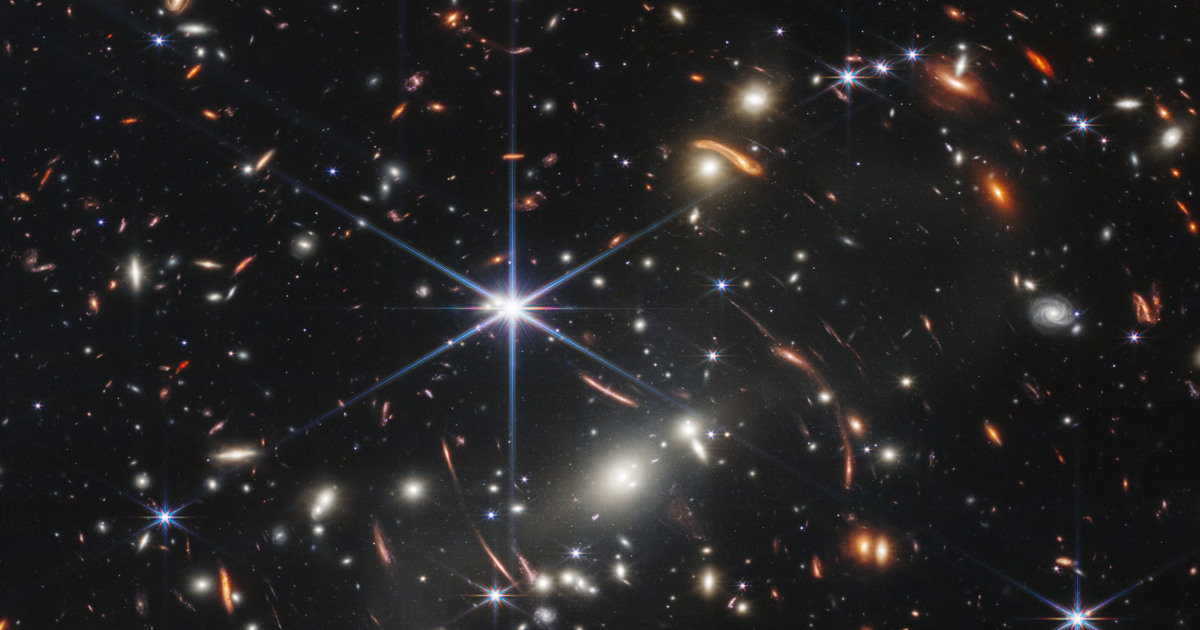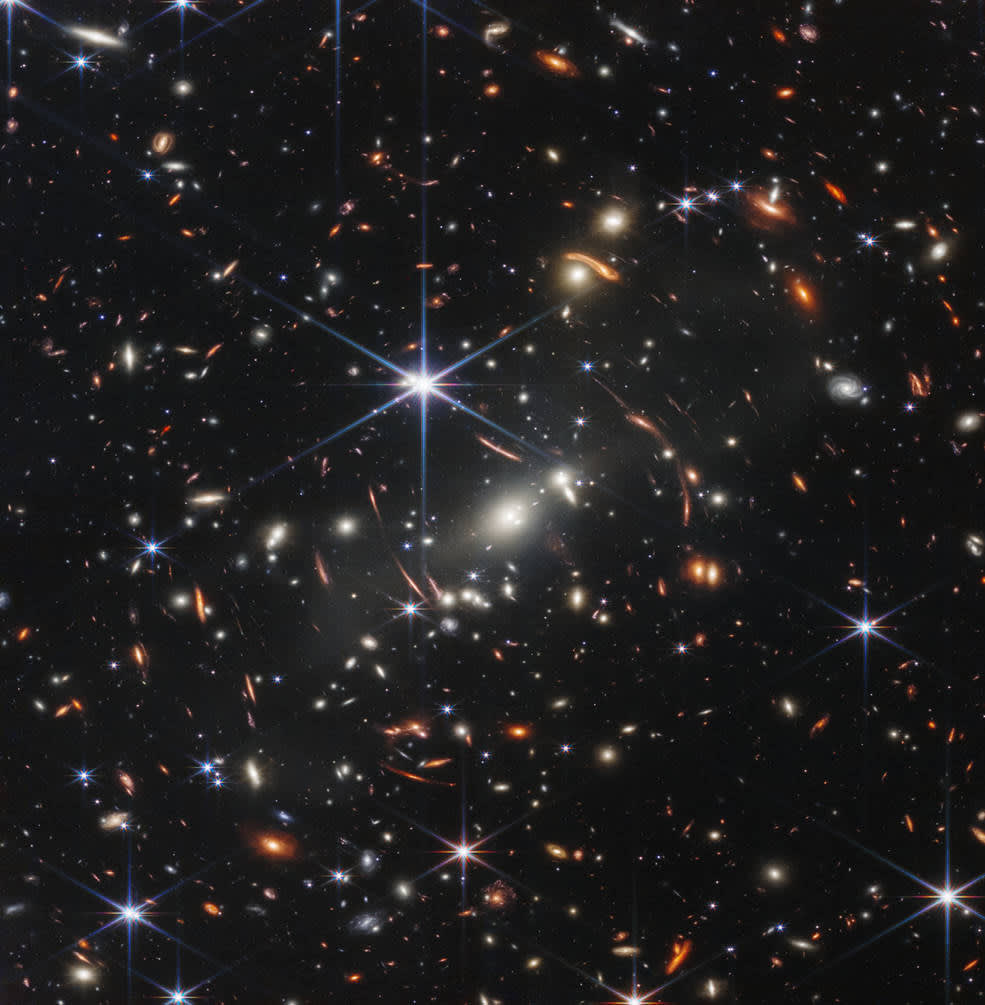
The first image from NASA’s James Webb Space Telescope offered humanity a stunning new view of the universe on Monday — a first-of-its-kind infrared image so distant in the cosmos that it shows stars and galaxies as they appeared 13 billion years ago.
President Joe Biden revealed the new image Monday at the White House alongside NASA Administrator Bill Nelson. Dubbed “Webb’s First Deep Field,” it is the first full-color image from the $10 billion observatory that launched into space last year, and the highest-resolution infrared view of the universe yet captured.
In a news briefing last month to preview the image, Thomas Zurbuchen, associate administrator of NASA’s Science Mission Directorate, said it will likely represent a turning point in humanity’s understanding of the cosmos.
“It’s not an image. It’s a new worldview,” Zurbuchen said at the time.
The image offers a glimpse of the universe as it was 13 billion years ago. Telescopes essentially function as time machines because it takes time for light to travel through space.
As such, light that reaches the Webb telescope from the most distant galaxies in the universe does not show present conditions but rather provide insights into how the universe was billions of years ago.
Scientists have said that the James Webb Space Telescope could unlock mysteries from as far back as 100 million years after the Big Bang.
The Webb observatory’s infrared “eyes” allow it to see distant stars and galaxies beyond the range of human sight and other telescopes, such as the Hubble Space Telescope, that see primarily visible light.
Infrared instruments are better suited for trying to detect the universe’s earliest stars and galaxies because the longer wavelengths of infrared light can pierce through dust and gas that might otherwise obscure some celestial objects. Since the universe is also expanding, light from the earliest stars and galaxies is stretched, shifting into longer infrared wavelengths undetectable by Hubble or the human eye.
In a separate event on Tuesday, NASA will release more images from the Webb telescope, including the observatory’s first spectrum of an exoplanet, showing light emitted at different wavelengths from a planet in another star system. These types of observations could help scientists search for signs of life beyond Earth.
The James Webb Space Telescope is a collaboration among NASA, the European Space Agency and the Canadian Space Agency. The tennis court-sized observatory is designed to study the early days after the Big Bang and help astronomers piece together how the modern universe came to be.
Source: | This article originally belongs to Nbcnews.com









